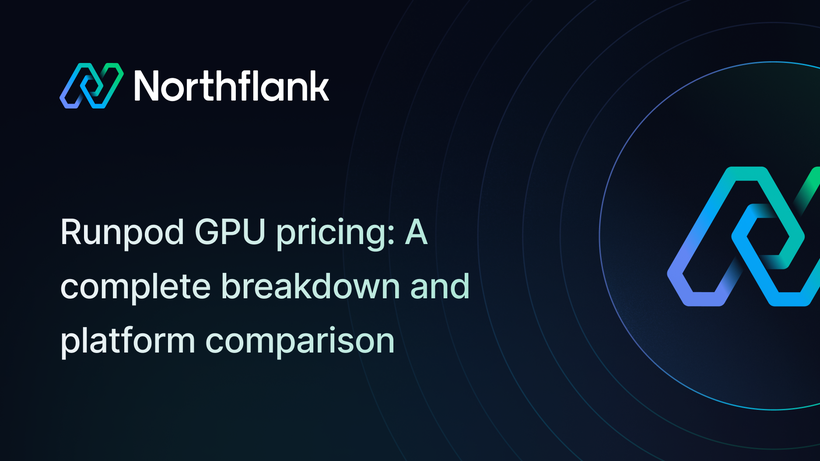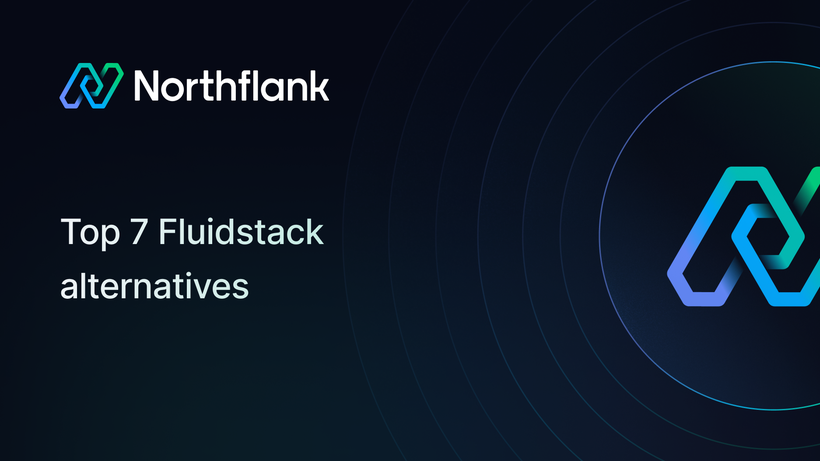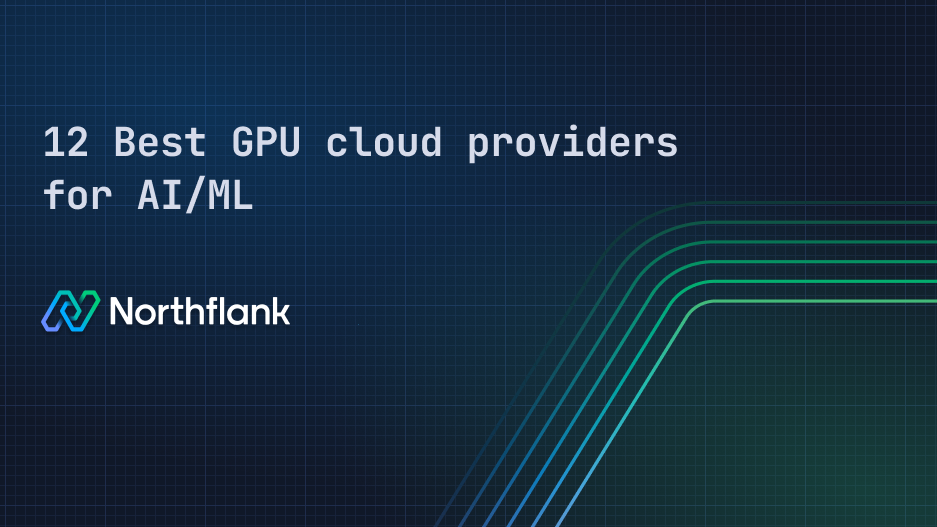

12 Best GPU cloud providers for AI/ML in 2025
GPU cloud used to mean spinning up a machine and hoping your setup worked. Now it's the backbone of AI infrastructure. The way you train, fine-tune, and deploy models depends on how fast you can access hardware and how much of the surrounding stack is already handled.
Most platforms still make you do too much. You’re expected to manage drivers, configure scaling, wire up CI, and somehow keep everything production-ready. That’s changing fast. Tools like Northflank are cutting through the noise, giving developers a way to ship AI workloads without touching low-level ops.
This isn’t about who has the biggest fleet of GPUs. It’s about who actually helps you build.
Here’s what makes a GPU cloud platform worth using in 2025, and which ones are leading the way.
If you’re short on time, here’s the full list. These are the platforms that actually work well for AI and ML teams in 2025. Some are built for scale. Some are better for quick jobs or budget runs. A few are trying to rethink the experience entirely. The rest of this article explains how they compare, what they’re good at, and where they fall short.
Need help with GPU capacity planning? Choosing a provider is just the first step. If you have specific availability requirements or volume needs, request GPU capacity here.
| Provider | GPU types available | Key strengths | Ideal use cases |
|---|---|---|---|
| Northflank | A100, H100, L4, L40S, TPU v5e, see full list here. | Full-stack AI: GPUs, APIs, LLMs, frontends, backends, databases, and secure infra | Full-stack production AI products, CI/CD for ML, bring your own cloud(BYOC), secure runtime, and many more |
| NVIDIA DGX Cloud | H100, A100 | Native access to NVIDIA’s full AI stack | Research labs, large-scale training |
| AWS | H100, A100, L40S, T4 | Flexible, global, deeply integrated | Enterprise AI, model training |
| GCP | A100, H100, TPU v5e | Optimized for TensorFlow, AI APIs | GenAI workloads, GKE + AI |
| Azure | A100, MI300X, L40S | Microsoft Copilot ecosystem integration | AI+enterprise productivity |
| TensorDock | A100, H100, RTX 6000 | Low-cost, self-serve, hourly billing | Budget fine-tuning, hobbyists |
| Oracle Cloud (OCI) | A100, H100, MI300X | Bare metal with RDMA support | Distributed training, HPC |
| DigitalOcean Paperspace | A100, RTX 6000 | Developer-friendly notebooks + low ops | ML prototyping, small teams |
| CoreWeave | A100, H100, L40S | Custom VM scheduling, multi-GPU support | VFX, inference APIs |
| Lambda | H100, A100, RTX 6000 | ML-focused infrastructure, model hubs | Deep learning, hosted LLMs |
| RunPod | A100, H100, 3090 | Usage-based billing with secure volumes | LLM inference, edge deployments |
| Vast AI | Mixed (A100, 3090, 4090) | Peer-to-peer, ultra low-cost | Experimental workloads, one-off jobs |
While most hyperscalers like GCP and AWS offer strong infrastructure, their pricing is often geared toward enterprises with high minimum spend commitments. For smaller teams or startups, platforms like Northflank offer much more competitive, usage-based pricing without long-term contracts, while still providing access to top-tier GPUs and enterprise-grade features.
The best GPU platforms in 2025 aren’t just hardware providers. They’re infrastructure layers that let you build, test, and deploy AI products with the same clarity and speed as modern web services. Here’s what actually matters:
-
Access to modern GPUs
H100s and MI300X are now the standard for large-scale training. L4 and L40S offer strong price-to-performance for inference. Availability still makes or breaks a platform.
-
Fast provisioning and autoscaling
You shouldn’t wait to run jobs. Production-ready platforms offer second-level startup, autoscaling, and GPU scheduling built into the workflow.
-
Environment separation
Support for dedicated dev, staging, and production environments is critical. You should be able to promote models safely, test pipelines in isolation, and debug without affecting live systems.
-
CI/CD and Git-based workflows
Deployments should hook into Git, not require manual scripts. Reproducible builds, container support, and job-based execution are essential for real iteration speed.
-
Native ML tooling
Support for Jupyter, PyTorch, Hugging Face, Triton, and containerized runtimes should be first-class, not something you configure manually.
-
Bring your own cloud
Some teams need to run workloads in their own VPCs or across hybrid setups. Good platforms support this without losing managed features.
-
Observability and metrics
GPU utilization, memory tracking, job logs, and runtime visibility should be built in. If you can't see it, you can't trust it in production.
-
Transparent pricing
Spot pricing and regional complexity often hide real costs. Pricing should be usage-based, predictable, and clear from day one.
Platforms like Northflank are pushing GPU infrastructure in this direction, one where GPUs feel like part of your application layer, not a separate system to manage.
💡Note on Pricing: We’ve intentionally left out detailed pricing information because costs in the GPU cloud space fluctuate frequently due to supply, demand, and regional availability. Most platforms offer usage-based billing, spot pricing, or discounts for committed use. For the most accurate and up-to-date pricing, we recommend checking each provider’s site directly.
This section goes deep on each platform in the list. You’ll see what types of GPUs they offer, what they’re optimized for, and how they actually perform in real workloads. Some are ideal for researchers. Others are built for production.
Northflank abstracts the complexity of running GPU workloads by giving teams a full-stack platform; GPUs, runtimes, deployments, CI/CD, and observability all in one. You don’t have to manage infra, build orchestration logic, or wire up third-party tools.
Everything from model training to inference APIs can be deployed through a Git-based or templated workflow. It supports bring-your-own-cloud (AWS, Azure, GCP, and more), but it works fully managed out of the box.
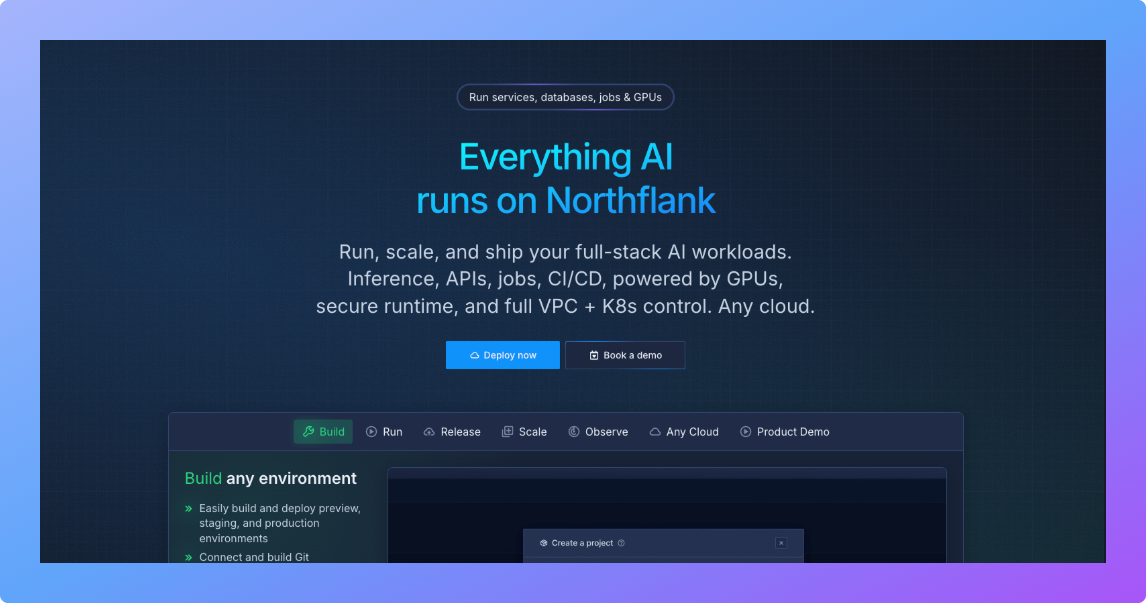
What you can run on Northflank:
- Inference APIs with autoscaling and low-latency startup
- Training or fine-tuning jobs (batch, scheduled, or triggered by CI)
- Multi-service AI apps (LLM + frontend + backend + database)
- Hybrid cloud workloads with GPU access in your own VPC
What GPUs does Northflank support?
Northflank offers access to 18+ GPU types, including NVIDIA A100, H100, L4, L40S, AMD MI300X, TPU v5e, and Habana Gaudi. View the full list here.
Where it fits best:
If you're building production-grade AI products or internal AI services, Northflank handles both the GPU execution and the surrounding app logic. Especially strong fit for teams who want Git-based workflows, fast iteration, and zero DevOps overhead.
See how Cedana uses Northflank to deploy GPU-heavy workloads with secure microVMs and Kubernetes
DGX Cloud is NVIDIA’s managed stack, giving you direct access to H100/A100-powered infrastructure, optimized libraries, and full enterprise tooling. It’s ideal for labs and teams training large foundation models.
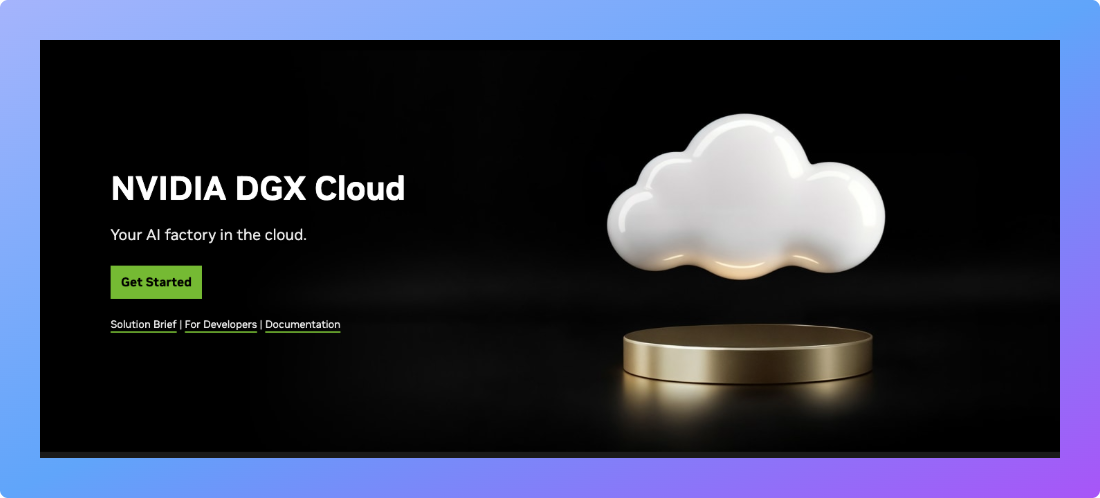
What you can run on DGX Cloud:
- Foundation model training with optimized H100 clusters
- Multimodal workflows using NVIDIA AI Enterprise software
- GPU-based research environments with full-stack support
What GPUs does NVIDIA DGX Cloud support?
DGX Cloud provides access to NVIDIA H100 and A100 GPUs, delivered in clustered configurations optimized for large-scale training and NVIDIA’s AI software stack.
Where it fits best:
For teams building new model architectures or training at scale with NVIDIA’s native tools, DGX Cloud offers raw performance with tuned software.
AWS offers one of the broadest GPU lineups (H100, A100, L40S, T4) and mature infrastructure for managing ML workloads across global regions. It's highly configurable, but usually demands hands-on DevOps.
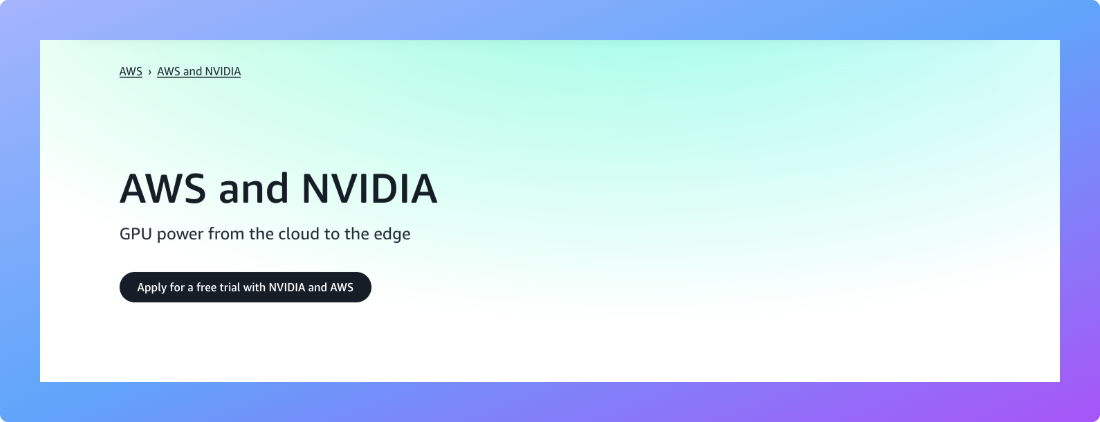
What you can run on AWS:
- Training pipelines via SageMaker or custom EC2 clusters
- Inference endpoints using ECS, Lambda, or Bedrock
- Multi-GPU workflows with autoscaling and orchestration logic
What GPUs does AWS support?
AWS supports a wide range of GPUs, including NVIDIA H100, A100, L40S, and T4. These are available through services like EC2, SageMaker, and Bedrock, with support for multi-GPU setups.
Where it fits best:
If your infra already runs on AWS or you need fine-grained control over scaling and networking, it remains a powerful, albeit heavy, choice.
GCP supports H100s and TPUs (v4, v5e) and excels when used with the Google ML ecosystem. Vertex AI, BigQuery ML, and Colab make it easier to prototype and deploy in one flow.
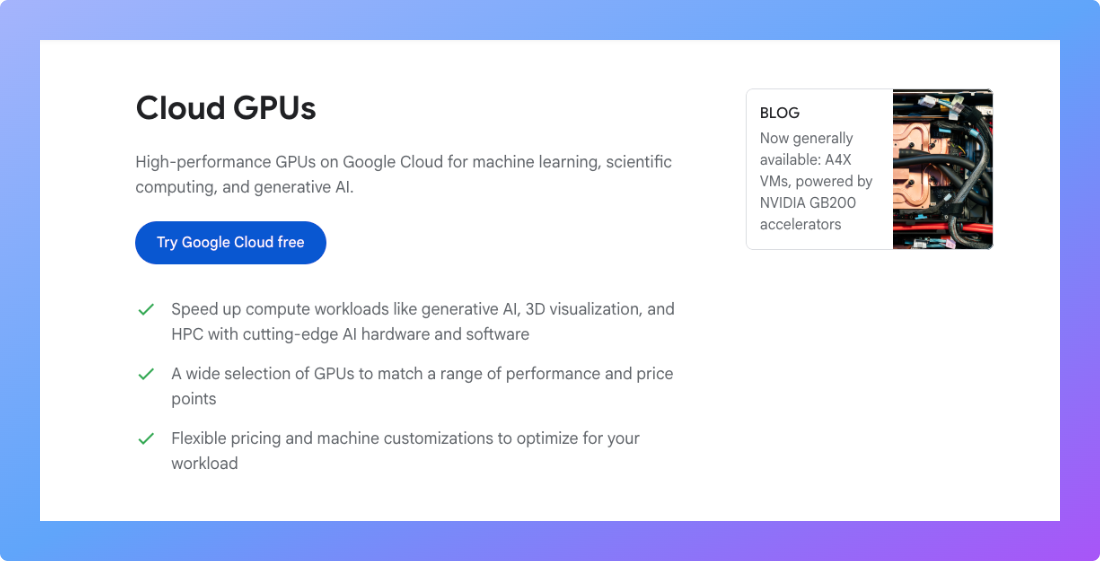
What you can run on GCP:
- LLM training on H100 or TPU v5e
- MLOps pipelines via Vertex AI
- TensorFlow-optimized workloads and model serving
What GPUs does GCP support?
GCP offers NVIDIA A100 and H100, along with Google’s custom TPU v4 and v5e accelerators. These are integrated with Vertex AI and GKE for optimized ML workflows.
Where it fits best:
If you're building with Google-native tools or need TPUs, GCP offers a streamlined ML experience with tight AI integrations.
Azure supports AMD MI300X, H100s, and L40S, and is tightly integrated with Microsoft’s productivity suite. It's great for enterprises deploying AI across regulated or hybrid environments.

What you can run on Azure:
- AI copilots embedded in enterprise tools
- MI300X-based training jobs
- Secure, compliant AI workloads in hybrid setups
What GPUs does Azure support?
Azure supports NVIDIA A100, L40S, and AMD MI300X, with enterprise-grade access across multiple regions. These GPUs are tightly integrated with Microsoft’s AI Copilot ecosystem.
Where it fits best:
If you're already deep in Microsoft’s ecosystem or need compliance and data residency support, Azure is a strong enterprise option.
TensorDock is designed for affordability and speed. You get access to A100s, 3090s, and other cards with transparent pricing and self-serve provisioning.
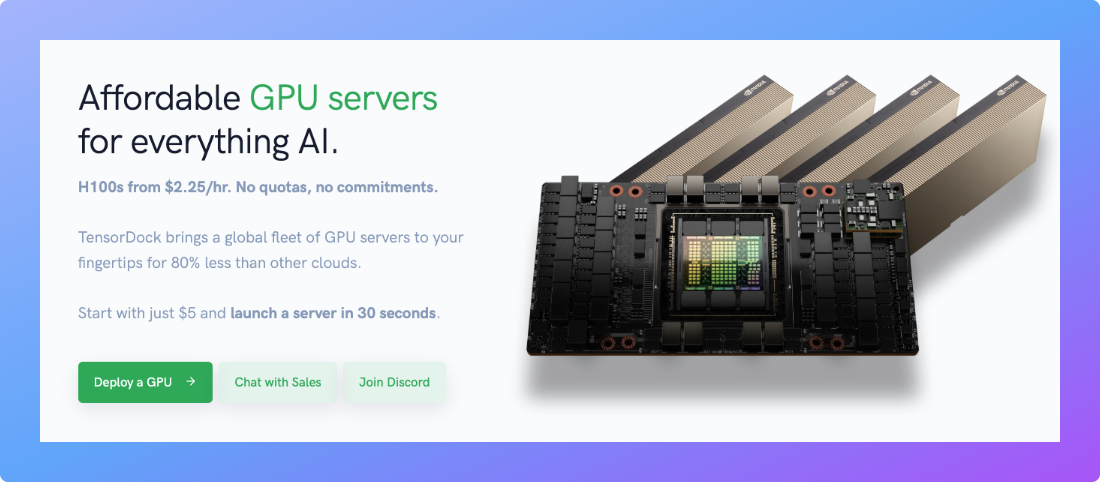
What you can run on TensorDock:
- Fine-tuning or training experiments on a budget
- Short-lived jobs that don’t need orchestration
- LLM hobby projects or community pipelines
What GPUs does TensorDock support?
TensorDock provides access to NVIDIA A100, H100, RTX 6000, and older-generation GPUs like 3090, all available on a self-serve, hourly basis.
Where it fits best:
Perfect for side projects or cost-sensitive workloads that need quick access without cloud overhead.
OCI offers bare metal GPU access, including H100s and MI300X, with high-speed InfiniBand networking and RDMA support. It’s ideal for distributed training and HPC workloads.

What you can run on OCI:
- Large-scale training jobs using low-latency interconnect
- AI simulations or multi-node fine-tuning workflows
- Workloads needing RDMA performance tuning
What GPUs does OCI support?
Oracle Cloud Infrastructure (OCI) offers NVIDIA A100, H100, and AMD MI300X GPUs on bare metal instances with RDMA and InfiniBand support for high-speed training.
Where it fits best:
If you need high throughput and bare metal control, OCI is uniquely positioned for technical teams building serious infrastructure.
Paperspace is built for developers who want fast access to GPUs without learning a full cloud platform. It’s great for notebooks, small training runs, and demos.
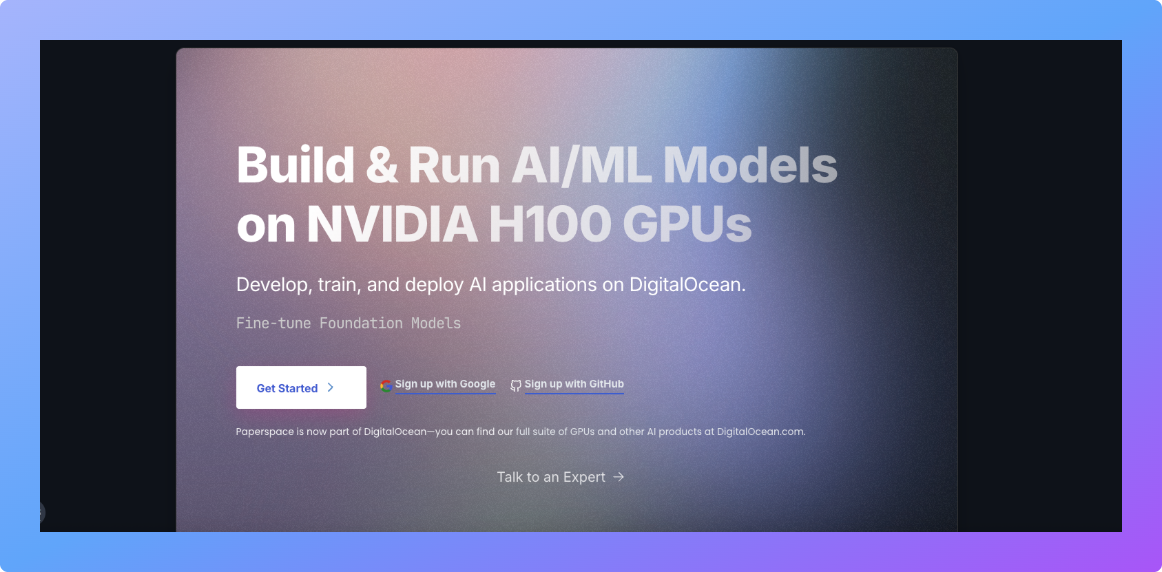
What you can run on Paperspace:
- Jupyter-based model development
- Lightweight training and inference tasks
- Early-stage product demos or MVPs
What GPUs does Paperspace support?
Paperspace (by DigitalOcean) offers access to NVIDIA A100, RTX 6000, and 3090 GPUs, ideal for notebooks, prototyping, and smaller ML workloads.
Where it fits best:
Great for small teams or solo devs who want to get started quickly with minimal setup.
CoreWeave offers fractional GPUs, custom job scheduling, and multi-GPU support across A100, H100, and L40S cards. It’s built for speed and flexibility, with strong adoption in AI and VFX.
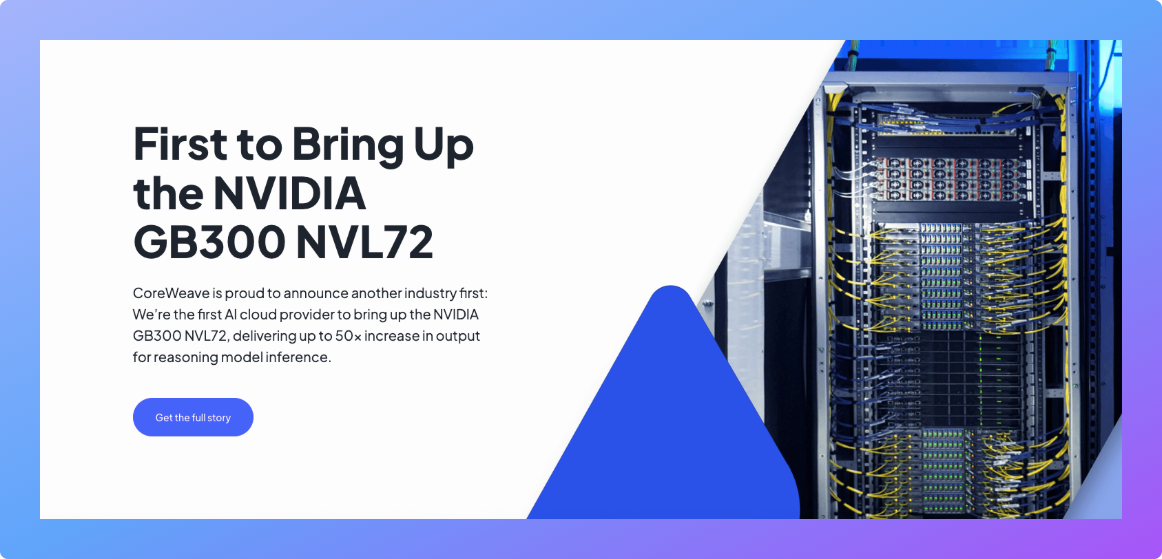
What you can run on CoreWeave:
- High-throughput inference APIs
- Fractional GPU workloads (low-latency with cost control)
- GPU-heavy media processing pipelines
What GPUs does CoreWeave support?
CoreWeave provides NVIDIA H100, A100, L40S, and support for fractional GPU usage, optimized for inference, media workloads, and dynamic scaling.
Where it fits best:
If you need flexible scaling, custom orchestration, or elastic GPU scheduling, CoreWeave delivers performance at every layer.
Lambda offers GPU cloud clusters optimized for ML, plus model hub integration and support for hosted inference. It’s tailored for teams that want managed training and serving.
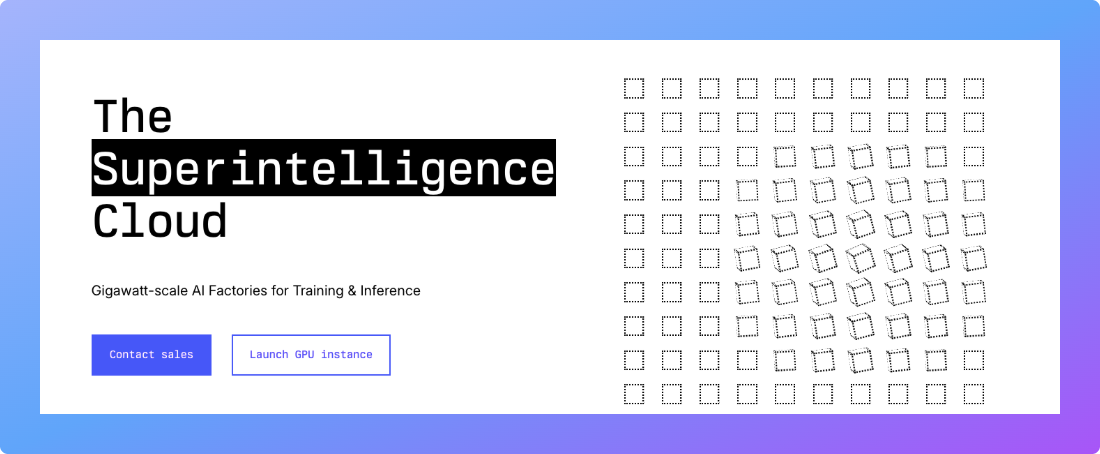
What you can run on Lambda:
- Custom training workflows with Docker containers
- Hosted LLMs and CV models
- Prebuilt inference endpoints for deployment
What GPUs does Lambda support?
Lambda supports NVIDIA H100, A100, RTX 6000, and 4090 GPUs through pre-configured ML clusters and containerized runtimes.
Where it fits best:
If you're focused on model lifecycle (train → fine-tune → deploy), Lambda simplifies the process with ML-specific UX.
RunPod gives you isolated GPU environments with job scheduling, encrypted volumes, and custom inference APIs. It’s particularly strong for privacy-sensitive workloads.
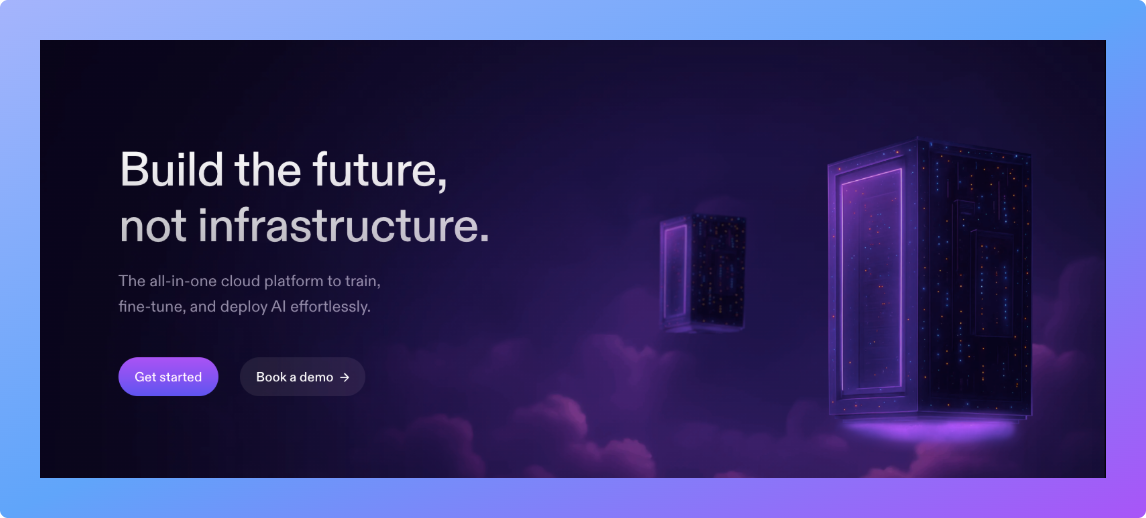
What you can run on RunPod:
- Inference jobs with custom runtime isolation
- AI deployments with secure storage
- GPU tasks needing fast startup and clean teardown
What GPUs does RunPod support?
RunPod offers NVIDIA H100, A100, and 3090 GPUs, with an emphasis on secure, containerized environments and job scheduling.
Where it fits best:
If you're running edge deployments or data-sensitive workloads that need more control, RunPod is a lightweight and secure option.
Vast AI aggregates underused GPUs into a peer-to-peer marketplace. Pricing is unmatched, but expect less control over performance and reliability.
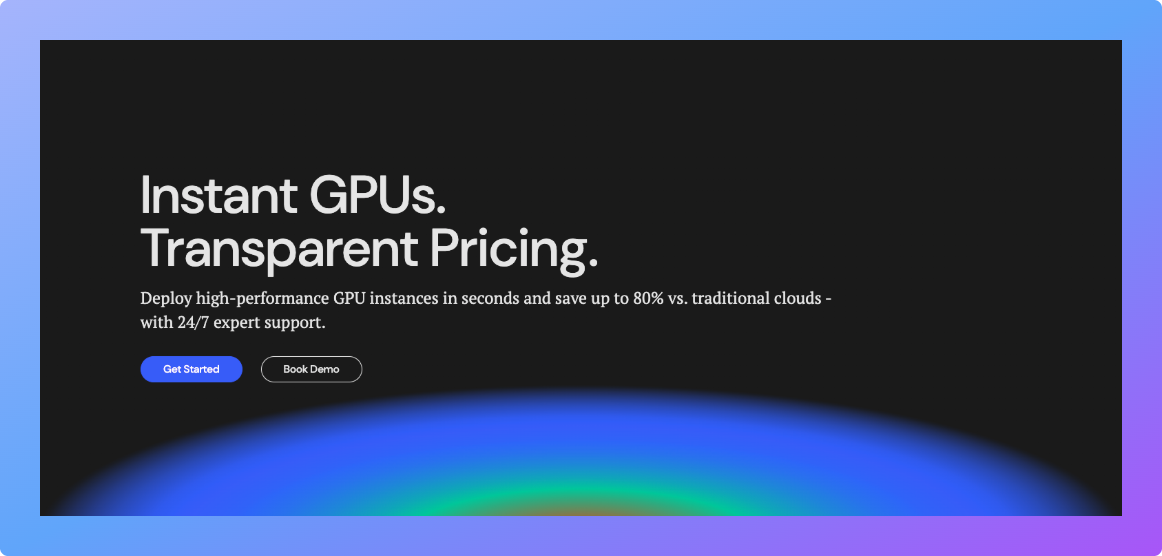
What you can run on Vast AI:
- Cost-sensitive training or fine-tuning
- Short-term experiments or benchmarking
- Hobby projects with minimal infra requirements
What GPUs does Vast AI support?
Vast AI aggregates NVIDIA A100, 4090, 3090, and a mix of consumer and datacenter GPUs from providers in its peer-to-peer marketplace. Availability and performance may vary by host.
Where it fits best:
If you’re experimenting or need compute on a shoestring, Vast AI provides ultra-low-cost access to a wide variety of GPUs.
If you've already looked at the list and the core features that matter, this section helps make the call. Different workloads need different strengths, but a few platforms consistently cover more ground than others.
| Use Case | What to Prioritize | Platforms to Consider |
|---|---|---|
| Full-stack AI delivery | Git-based workflows, autoscaling, managed deployments, bring your own cloud, and GPU runtime integration. | Northflank |
| Large-scale model training | H100 or MI300X, multi-GPU support, RDMA, high-bandwidth networking | Northflank, NVIDIA DGX Cloud, OCI, AWS |
| Real-time inference APIs | Fast provisioning, autoscaling, low-latency runtimes | Northflank, CoreWeave, RunPod |
| Fine-tuning or experiments | Low cost, flexible billing, quick start | Northflank, TensorDock, Paperspace, Vast AI |
| Production deployment (LLMs) | CI/CD integration, containerized workloads, runtime stability | Northflank, Lambda, GCP |
| Edge or hybrid AI workloads | Secure volumes, GPU isolation, regional flexibility | Northflank, RunPod, Azure, AWS |
GPU cloud has become a key part of the AI stack. Choosing the right platform depends on what you’re building, how fast you need to move, and how much of the infrastructure you want to manage yourself. We’ve looked at what makes a great AI platform, broken down the top providers, and mapped out how to pick the right one for your use case.
If you’re looking for a platform that handles the heavy lifting without getting in the way, Northflank is worth trying. It’s built for developers, production-ready, and designed to help you move fast.
Try Northflank or book a demo to see how it fits your stack.
